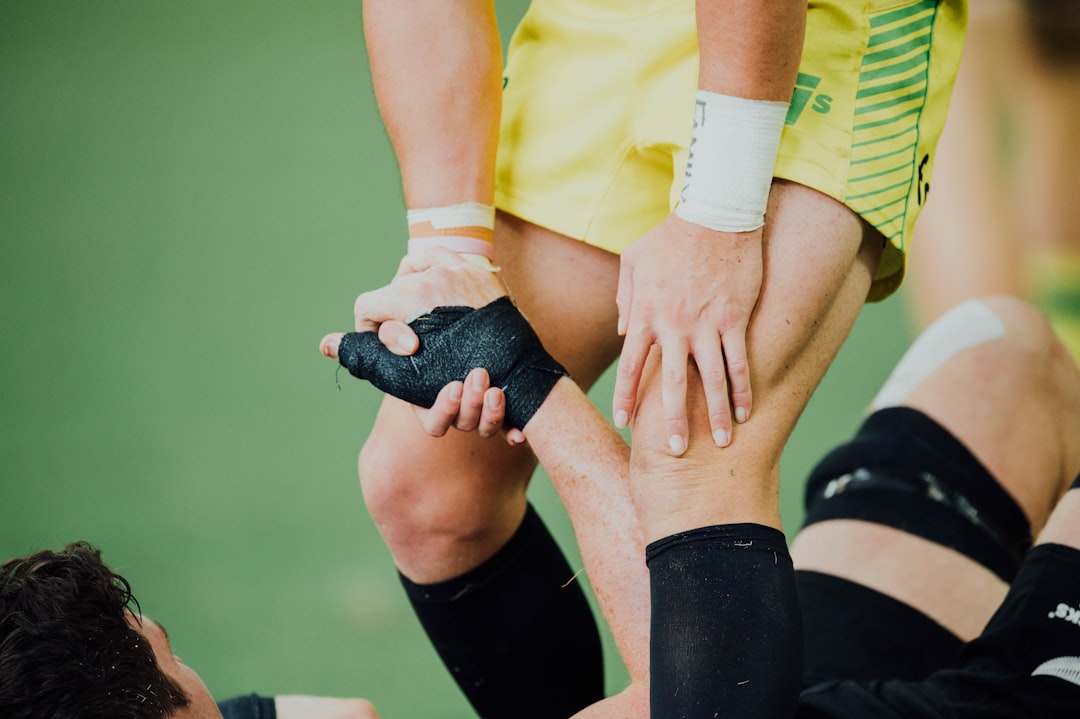What is it about?
Tissue engineering of the intervertebral disc with cultured nucleus pulposus cells using atelocollagen scaffold and growth factors.
Featured Image
Why is it important?
STUDY DESIGN: In vitro experiment using rabbit nucleus pulposus (NP) cells seeded in atelocollagen scaffolds under the stimulation of growth factors. OBJECTIVE: To demonstrate the effect of anabolic growth factors in rabbit NP cells cultured in atelocollagen type I and type II. SUMMARY OF BACKGROUND DATA: Atelocollagen provides intervertebral disc (IVD) cells for a biocompatible environment to produce extracellular matrix. IVD cells with exogenous transforming growth factor-beta 1 (TGF-β1) and bone morphogenetic protein-2 (BMP-2) also render an increase in matrix synthesis. However, the effect of anabolic growth factors in NP cells cultured in atelocollagens was not elucidated before. METHODS: Rabbit NP cell was harvested, enzymatically digested, and cultured. The NP cells were seeded to atelocollagen type I and type II scaffolds, and then cultures were exposed to TGF-β1 (10 ng/mL) and/or BMP-2 (100 ng/mL). DNA synthesis was measured using [4H]-thymidine incorporation. Newly synthesized proteoglycan was measured using [35S]-sulfate incorporation. Reverse transcription-polymerase chain reactions (RT-PCRs) for mRNA expression of aggrecan, collagen type I, collagen type II, and osteocalcin were performed. RESULTS: Rabbit NP cells cultured in atelocollagen type I scaffold showed an increase (1.7 to 2.4-fold) in DNA synthesis in response to TGF-β1 and/or BMP-2 (P < 0.05), whereas NP cultures in atelocollagen type II demonstrated a 30% increase in DNA synthesis only with combination of both growth factors compared with control (P < 0.05). Rabbit NP cells in atelocollagen type II scaffold with TGF-β1 and combination of both growth factors exhibited robust 5.3- and 5.4-fold increases in proteoglycan synthesis (P < 0.05), whereas any cultures in atelocollagen type I failed to show any significant increase compared with control. Rabbit NP cells in atelocollagen type I and type II scaffolds with TGF-β1 and/or BMP-2 demonstrated the upregulation of aggrecan, collagen type I, and collagen type II mRNA expression compared with saline control (P < 0.05). The response in transcriptional level was more robust in atelocollagen type II than in type I. In any event, there is no recognizable expression of osteocalcin (P < 0.05).
Perspectives
NP cells in atelocollagens under the stimulation of TGF-β1 and BMP-2 exhibited anabolic responses in transcriptional and translational levels. Hence, such an approach can provide a suitable engineered tissue for IVD regeneration with potential for robust refurbishment of matrix.
Dr. Kwang il Lee
The Scripps Research Institute
Read the Original
This page is a summary of: Tissue Engineering of the Intervertebral Disc With Cultured Nucleus Pulposus Cells Using Atelocollagen Scaffold and Growth Factors, Spine, March 2012, Wolters Kluwer Health,
DOI: 10.1097/brs.0b013e31823c8603.
You can read the full text:
Contributors
The following have contributed to this page










